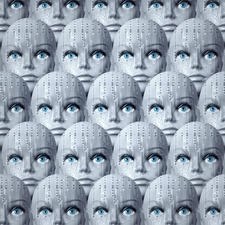Debian Clone
Cloning a Debian System with apt-clone

© Csaba Deli, 123RF.com
Under the right circumstances, apt-clone can be a simple option for cloning your Debian system.
A new system, container, or chroot jail can be created in a few minutes. However, configuring any of them can take hours, especially if you want them to resemble existing systems. Numerous cloning applications exist, notably dd, Partimage, or Clonezilla, but on Debian-derivatives, such as Debian Ubuntu or Linux Mint, one the simplest tools is a small script called apt-clone. Apt-clone is vaguely reminiscent of Clonezilla, but has the advantage of simplicity because it uses standard command-line tools and basic commands. Apt-clone can also be used as a convenient backup.
Apt-clone belongs to the cluster of small scripts that center on apt-get and apt and their management or ease of use. New members of these scripts are always appearing and occasionally disappearing, so the Debian stable repository contains 54 of these scripts and Debian unstable repository 64 -- a figure that might very well increase before the next official release. Apt-clone itself is over a decade old, which is time enough for its use to spread quietly. Most Debian derivatives include apt-clone in its repositories, but you can also download the source code from GitHub. As I write, though, the latest couple of Ubuntu releases contain a version of apt-clone that appears to have version incompatibilities. In general, though, do not be concerned if you notice that the most recent contributions are a couple of years old. The fact is, git-clone is so simple, and mature enough, that the code rarely needs to be updated.
Creating the Cloning File
[...]
Buy Linux Magazine
Subscribe to our Linux Newsletters
Find Linux and Open Source Jobs
Subscribe to our ADMIN Newsletters
Support Our Work
Linux Magazine content is made possible with support from readers like you. Please consider contributing when you’ve found an article to be beneficial.

News
-
Parrot OS Switches to KDE Plasma Desktop
Yet another distro is making the move to the KDE Plasma desktop.
-
TUXEDO Announces Gemini 17
TUXEDO Computers has released the fourth generation of its Gemini laptop with plenty of updates.
-
Two New Distros Adopt Enlightenment
MX Moksha and AV Linux 25 join ranks with Bodhi Linux and embrace the Enlightenment desktop.
-
Solus Linux 4.8 Removes Python 2
Solus Linux 4.8 has been released with the latest Linux kernel, updated desktops, and a key removal.
-
Zorin OS 18 Hits over a Million Downloads
If you doubt Linux isn't gaining popularity, you only have to look at Zorin OS's download numbers.
-
TUXEDO Computers Scraps Snapdragon X1E-Based Laptop
Due to issues with a Snapdragon CPU, TUXEDO Computers has cancelled its plans to release a laptop based on this elite hardware.
-
Debian Unleashes Debian Libre Live
Debian Libre Live keeps your machine free of proprietary software.
-
Valve Announces Pending Release of Steam Machine
Shout it to the heavens: Steam Machine, powered by Linux, is set to arrive in 2026.
-
Happy Birthday, ADMIN Magazine!
ADMIN is celebrating its 15th anniversary with issue #90.
-
Another Linux Malware Discovered
Russian hackers use Hyper-V to hide malware within Linux virtual machines.

